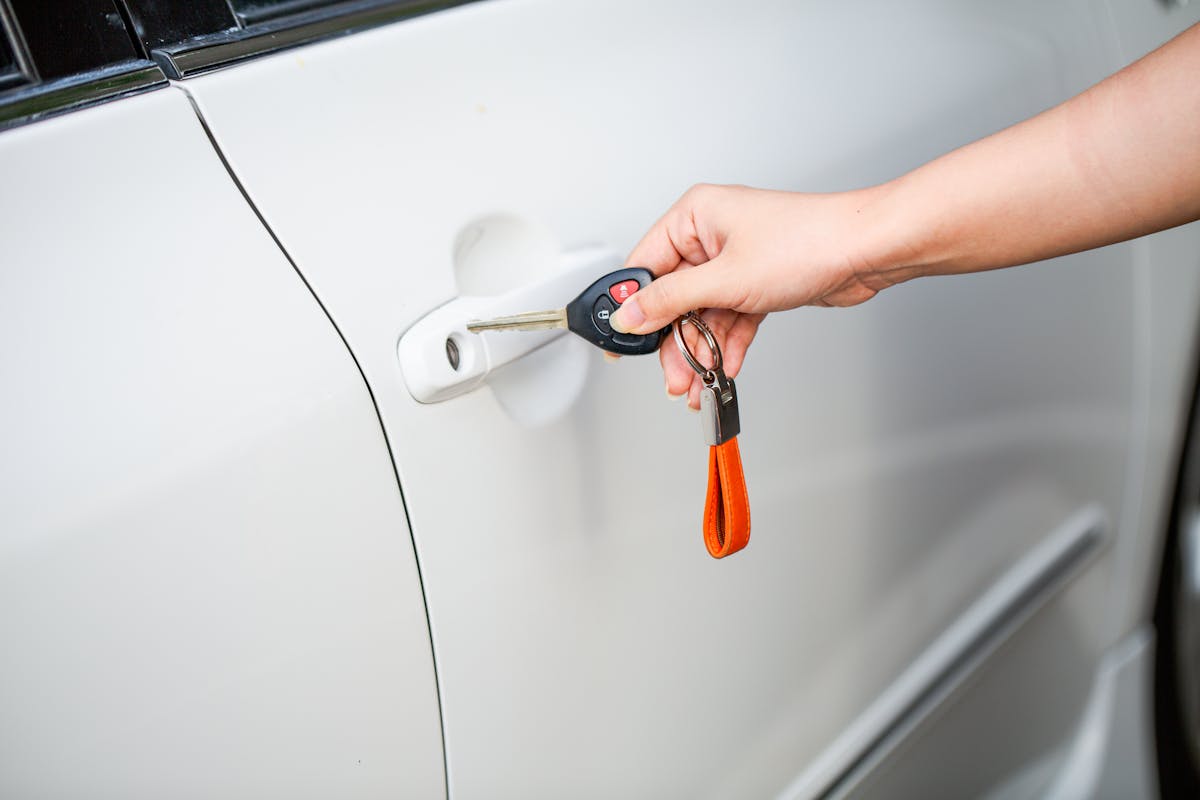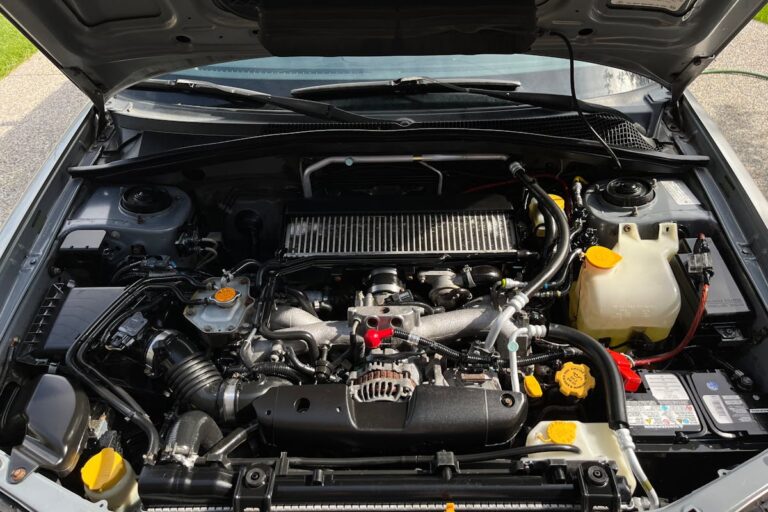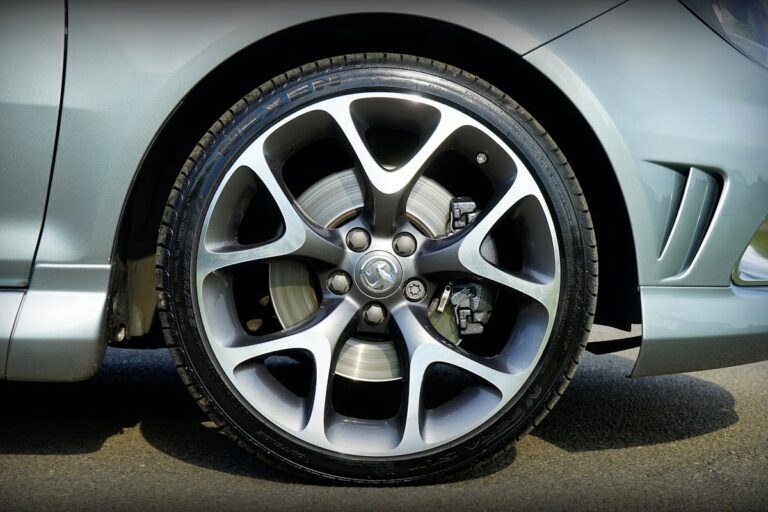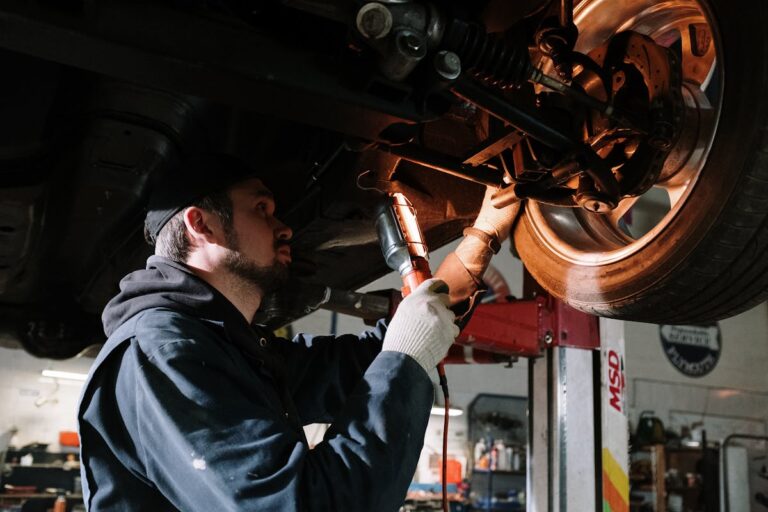Door Lock Actuator Symptoms
The door lock actuator, an often overlooked component, plays an essential role in maintaining the security of your vehicle. When this part begins to fail, it exhibits distinct symptoms such as unresponsive locks, abnormal noises, or irregular lock cycling. These issues can compromise the safety of your vehicle, making it imperative to understand and identify them early. In the ensuing discourse, we will explore these symptoms in detail, providing an all-encompassing guide to help you diagnose potential actuator issues and understand their implications for vehicle security.
Understanding Door Lock Actuators
In the domain of automotive technology, door lock actuators play a pivotal role that often goes overlooked. These components are integral to the functioning of the car’s lock mechanisms, providing the movement needed to lock and open doors. Fundamentally, they represent the bridge between the electronic and the mechanical systems; when the lock button is pressed, the actuator translates this electronic signal into mechanical action.
Actuator types vary, each having specific characteristics that define their operation and use. The most common types are rod-style actuators, which feature a rod connected to the lock that moves when activated, and cable-style actuators, that use a cable to pull and push the lock mechanism. Some modern cars employ direct actuator systems, where the actuator is integrated directly into the lock mechanism, offering higher efficiency and compactness.
Understanding door lock actuators, their types, and their role in lock mechanisms is critical to diagnosing issues and providing effective solutions. The importance of these components in vehicle security as well as the comfort and convenience of car owners underscores the need for regular maintenance and swift repair when necessary.
Symptom 1: Unresponsive Door Locks
The first symptom that may indicate a malfunctioning door lock actuator is unresponsiveness of the door locks. This can be detected when the door locks fail to engage or disengage upon command from the key fob or the interior lock switch. A thorough examination is required to identify the specific causes leading to this unresponsiveness, which could range from a drained battery to a faulty actuator mechanism.
Detecting Unresponsive Locks
Unresponsive door locks often serve as the first telltale sign of a faltering door lock actuator. This symptom can manifest in a variety of ways, all of which can be detected with a keen eye and understanding of basic lock maintenance tips.
When you insert and turn your key, or press the electronic release button, and the lock doesn’t engage or disengage, this is a primary indicator of unresponsiveness. You may also notice irregularities in the lock’s operation, such as sluggish movement or abnormal noises. These signs, while seemingly insignificant, should not be ignored as they can lead to complete lock failure.
Actuator testing methods can confirm the extent of the issue. A simple voltage test can be performed to check the power supply to the actuator. If the voltage is correct, and the lock is still unresponsive, this points to a defective actuator. A continuity test can also be conducted to assess the integrity of the actuator’s circuit.
It’s important to detect unresponsive locks early to prevent further damage and to maintain the security of your vehicle. Always observe your locks’ performance and seek professional help upon noticing any inconsistencies.
Causes of Unresponsiveness
Having explored the signs of unresponsive locks, it’s pertinent to understand the root causes. The primary cause is typically worn components. Over time, the mechanical parts within the door lock actuator can degrade due to repeated use, leading to the unresponsiveness of the lock. The actuator’s motor, gears, and linkage are the components most prone to wear and tear. When these components become excessively worn, they may fail to engage or disengage the lock mechanism, resulting in an unresponsive door lock.
Another major cause of unresponsiveness in door lock actuators is moisture exposure. Moisture can seep into the actuator’s casing, especially in older or damaged units, or during extreme weather conditions. The moisture can cause corrosion or short-circuit the electrical components of the actuator, rendering it ineffective. Moisture exposure can also cause the lubricant within the actuator to thin out or wash away, leading to increased friction and wear on the internal components.
Symptom 2: Noisy Door Lock Operation
In relation to door lock actuators, a distinct symptom pointing to their malfunction is a noisy operation when locking or releasing the doors. This abnormal door noise can be a clear indication of an underlying issue and should not be ignored.
A properly functioning door lock actuator should operate silently and smoothly. However, when the actuator starts to fail, it may produce a grinding or buzzing sound. This noise is usually due to worn-out gears within the actuator mechanism or a malfunctioning motor. It is essential to recognize that this audible symptom might vary in intensity and frequency, depending on the severity of the actuator’s issue.
Actuator maintenance plays a vital role in preventing and addressing these noise issues. Regular inspection and lubrication of the actuator can help reduce friction among its components, potentially mitigating the emergence of unwanted noise. If the noise persists despite maintenance efforts, it may be necessary to replace the entire actuator unit.
Symptom 3: Intermittent Lock Functioning
Intermittent lock functioning is another symptom indicative of a faulty door lock actuator. This irregular operation manifests as unpredictable lock behaviour, potentially stemming from electrical issues within the actuator system. This erratic functioning not only disrupts the convenience of the lock system but also raises grave concerns about the vehicle’s security.
Unpredictable Lock Behaviour
A significant number of car owners encounter a situation where their vehicle’s door lock displays unpredictable behaviour, specifically intermittent functioning. This issue can be attributed to the malfunctioning of the door lock actuator, a vital component that enables the automatic locking and releasing of vehicle doors.
When the lock behaviour becomes erratic, the door locks may function correctly one moment and fail at the next, rendering the actuator reliability questionable. This unpredictability may be sporadic, but it can also worsen over time, leading to more consistent lock failure. The culprit is often the internal motor of the actuator which can wear out or become damaged, consequently affecting its ability to efficiently convert the electrical signal into mechanical force.
Inconsistent lock behaviour can cause significant inconvenience to the car user, and it’s a clear indication of a potentially failing actuator. It’s worth noting that this symptom does not always indicate a complete actuator failure. It could be a sign of a weakening component that can still be salvaged if addressed promptly. As a result, an immediate check-up by a professional mechanic is recommended when such unpredictable lock behaviour is experienced.
Potential Electrical Issues
Occasionally, the intermittent functioning of a vehicle’s door lock can be traced back to a potential electrical issue. This is a common occurrence, especially in vehicles that are frequently exposed to harsh weather conditions or have a significant amount of mileage. The electrical system of a vehicle is complex, and any disruption in its operation can lead to an array of problems, including inconsistent functioning of the door lock actuator.
Wiring issues are a common culprit behind these electrical problems. The wiring system, responsible for transferring electrical power to different components of the vehicle, can deteriorate over time. Corrosion, damage, or loose connections can lead to intermittent power supply to the door lock actuator, causing it to function unpredictably.
Another potential electrical issue that could affect the door lock actuator is voltage fluctuations. The actuator is designed to operate within a specific voltage range. If the voltage supplied to the actuator frequently fluctuates beyond this range, it can lead to inconsistent lock operation. Voltage instability can be caused by a failing alternator, a weak battery, or faulty voltage regulator. As a result, it’s essential to maintain the vehicle’s electrical system to guarantee its ideal performance.
Impact on Vehicle Security
One of the most alarming symptoms of a faulty door lock actuator is the intermittent functioning of the vehicle’s lock system. This irregular operation can greatly undermine the vehicle’s inherent security measures, creating a substantial increase in security risks.
The erratic behavior of the lock system can be attributed to the inconsistencies in the actuator’s performance. When the actuator fails to respond consistently to the commands from the control module, the locks may disengage or lock unpredictably. This unpredictability poses a significant threat to theft prevention.
The vehicle’s security is greatly compromised as the locks can fail without warning, leaving the vehicle vulnerable to unauthorized access. It is possible for the locks to appear secure, but without reliable actuator performance, assurance of that security is diminished.
In addition, the intermittent lock functioning can also lead to situations where the vehicle’s occupants are unable to exit promptly in emergency situations. This could lead to potential safety hazards beyond the scope of theft prevention. Consequently, addressing a faulty door lock actuator promptly is vital not only for security but also for the overall safety of the vehicle’s occupants.

Symptom 4: Constant Lock Cycling
While it may not be immediately apparent, a clear indicator of a failing door lock actuator can be constant lock cycling. This issue manifests as the lock on your vehicle’s door repeatedly locking and releasing on its own, without any input from the user. This behavior is not only alarming but can also cause wear and tear on the locking mechanism, potentially leading to further problems down the line.
The most common lock cycling causes include:
- Faulty wiring: Damaged or frayed wires can interfere with the signal sent to the actuator, causing it to cycle.
- Worn out actuator: Over time, the actuator’s internal components can wear out, leading to malfunctions.
- Faulty switch: The switch that controls the lock could be broken, leading to unwanted lock cycling.
- Software issues: Sometimes, the vehicle’s software can cause the actuator to malfunction, leading to lock cycling.
Regarding troubleshooting techniques, it is essential to inspect the wiring, test the switch, and check the actuator for any signs of wear or damage. If these steps do not resolve the issue, it may be necessary to consult with a professional or consider replacing the actuator.
Symptom 5: Alarm System Malfunctions
Moving to another symptom indicative of a failing door lock actuator, alarm system malfunctions present a significant issue. When the actuator is on the brink of failure, it can disrupt the integration between the door lock and the alarm system. Alarm system integration is vital as it enhances the security of the vehicle. If the actuator fails, it can cause the alarm system to trigger unnecessarily or, on the contrary, fail to activate when needed.
Electronic component failures within the actuator can lead to these inconsistencies in alarm system performance. These failures can disrupt communication between the actuator and the alarm system, causing erratic or non-responsive behavior. For instance, the alarm may not sound when the vehicle’s door is forcibly opened, or it may trigger without any external stimulus.
Furthermore, the alarm may also fail to disarm, causing inconvenience for the vehicle owner. In severe cases, the alarm system might not function at all, leaving the vehicle unprotected. Consequently, alarm system malfunctions are a telling sign of a failing door lock actuator and should warrant immediate attention to avoid compromising the vehicle’s security.
Diagnosing a Faulty Actuator
Diagnosing a faulty door lock actuator involves a methodical approach that requires a keen eye for detail. Understanding the different actuator types is fundamental to pinpoint the issue accurately. A slight discrepancy can lead to misdiagnosis, making the entire process futile.
The following is a four-step guide for diagnosing a faulty actuator:
- Visual Inspection: Check the actuator for any visible damages. This can include broken wires, loose connections, or physical deformities.
- Operational Test: Attempt to lock and open the door multiple times. If the actuator fails to respond consistently, it could be faulty.
- Voltage Test: Using a multimeter, test the voltage at the actuator’s connector. Inadequate voltage suggests a power supply issue.
- Resistance Test: Measure the resistance across the actuator’s terminals. An abnormal reading indicates a potential actuator issue.
Follow these steps carefully, making sure to keep safety measures in mind. The installation tips suggested by manufacturers could also aid in the diagnosis process. The key is patience and precision, as rushing through this process might lead to an inaccurate diagnosis, further complicating the issue.
Replacing Your Door Lock Actuator
Upon successful diagnosis of a faulty door lock actuator, it becomes imperative to proceed with its replacement. Replacing an actuator is a task requiring technical know-how, and some essential installation tips can greatly ease the process.
First, verify the replacement actuator is compatible with your vehicle make and model. Next, disconnect the battery before starting the installation to prevent electrical shorts. Then, remove the door panel by unscrewing it and carefully lifting it off. Locate and remove the faulty actuator by disengaging it from the latch rod and electrical connector.
Before installing the new actuator, compare it with the old one to confirm its compatibility. Attach it to the latch rod and electrical connector, then fix it in place. Reattach the door panel, reconnect the battery, and test the door lock.
Actuator maintenance should not be overlooked, as it can prolong the unit’s lifespan. Regularly lubricate the actuator with silicone spray and inspect for signs of wear or damage. Troubleshooting and replacing a faulty actuator promptly will safeguard the security of your vehicle and the convenience of automatic locking and releasing.
Frequently Asked Questions
What Is the Average Lifespan of a Door Lock Actuator?
The average lifespan of a door lock actuator varies greatly due to factors like usage frequency and environmental conditions. However, with proper actuator maintenance, it can typically last for about 100,000 to 200,000 cycles.
How Much Does It Typically Cost to Replace a Door Lock Actuator?
The cost to replace a door lock actuator varies, largely dependent on replacement options and actuator brands. On average, you might expect to pay between $200-$600, including parts and labor, for a professional replacement service.
Can a Faulty Door Lock Actuator Impact Vehicle Safety?
Yes, a faulty door lock actuator can indeed impact vehicle safety. It poses safety concerns as it could lead to doors not locking properly, undermining actuator reliability and potentially leaving the vehicle vulnerable to theft.
Is It Possible to Repair a Door Lock Actuator or Does It Always Need to Be Replaced?
Yes, it is possible to repair a door lock actuator utilizing specific repair techniques. However, depending on the severity of the damage, replacement might be necessary to guarantee peak actuator performance and vehicle security.
Can Weather Conditions Affect the Functioning of a Door Lock Actuator?
Yes, weather conditions can impact a door lock actuator. Moisture damage from rain or snow can cause malfunctioning, and temperature fluctuations can affect the electronic components, leading to inconsistent or poor performance.






